What is CAD?
CAD stands for computer-aided design, which involves the use of information technology in the design process. In most cases, CAD systems consist of a combination of hardware and software. A hardware package includes graphic devices and peripherals for input and output, whereas a software package manipulates or analyzes shapes based on user interaction. In a CAD system, the software takes input from the product designer, stores the product model as graphics, and drives peripherals to display the product. CAD does not change the nature of the design process, but it does aid the designer. In most CAD packages, three-dimensional (3D) models can be rotated and viewed from any angle. Architectural, engineering, and design professionals can benefit from these state-of-the-art modeling CAD packages. some important CAD/CAM software will described in this article.
What is CAM?
CAM stands for computer-aided manufacturing. CAM is also known as Computer-aided Modeling or Computer-aided Machining. Manufacturing work pieces is controlled by computer software using machine tools and related machinery. In the beginning, computer-aided manufacturing (CAM) was developed to facilitate the transition from 2D design to 3D manufacturing and to enable companies to respond more quickly. In fashion and textiles, CAM has become an integral part of the design and production processes.
Function of CAD/CAM:
CAD software aimed toward the apparel and textile industry offers a complete design solution for the apparel or textile designer. This tool kit provides the designer with all the tools and techniques he or she needs to digitally create designs from the initial concept to the final presentation, to the creation of patterns for garments and products, to the grading of patterns (sizes) of those patterns.
The following are some of the most important functions of CAD/CAM:
- For presentations or storyboards, it is necessary to create mini-bodies, sketches (figures), and line drawings.
- Illustrations of fashion and sketches for quick sketching.
- Collaborating with buyers, suppliers, and retailers within the industry as well as globally to share collections.
- For textile designs, fabric swatches, universal and seasonal palettes, and color-ways, you need to create and manage a multitude of color-ways and color matches.
- Creating and simulating print designs, knit fabrics, and woven fabrics from libraries and from scratch as well as creating swatches from them.
- Utilizing and adapting the latest style trends and seasonal color palettes to create a unique look.
- Designing in repeat mode is possible, as there can be any number of repeats, and the sizes and sequences can be changed as well.
- Creating and viewing simulated garments on the body in order to evaluate the fit of the garment.
- Using style libraries and trimming libraries to create your own style.
- The creation and management of various color ways, color palettes, and color schemes.
List of CAD/CAM software used in garments industry:
In addition to the various textile and apparel software programs that have been designed specifically for the small business and freelance designer, there are also powerful CAD apparel and textile suites such as those offered by Lectra and Gerber that are more likely to be used by the larger apparel and textile companies as well. There are a number of different suites available for the apparel industry that have been designed to integrate all areas of the apparel process, from apparel and textile design to pattern making, grading, garment production to merchandising and data management. The suites are therefore expensive, but enable companies to achieve economies of scale by reducing development costs and lead times, ensuring better quality standards while maintaining an individual, distinctive style and a coherent brand image. As a result, the company will be more productive and profitable. Within any sector of the textile and apparel industry, these suites can also be tailored to meet the company’s or client’s specific needs.
The following list includes some of the most famous CAD/CAM software programs along with their applications as well. Among the most popular CAD/CAM software available in the market today are the following ones:
- Gerber
- PAD System
- Color Matters
- Auto CAD
- Illustrator and Photoshop
- Lectra
- CorelDraw
- Optitex
- TUKATECH
- Ned Graphics
These are some of the software products available in the market at the moment. There is no doubt that all of these are not suitable for every industry. It is important to note that the industries dealing with only design have different requirements compared to those dealing with manufacturing. The use of the software depends on the requirements and applications of the industry, and the user has to select the appropriate software for his or her use based upon the needs and applications of the industry. There are a number of popular softwares available in the market today; therefore, we will discuss some of their features, pros and cons in this article in order to help you make the best decision.
In this article, we will discuss some of the most important CAD/CAM software used in the garments industry.
1. Gerber:
In the fashion industry, Gerber Technology provides AccuMark Pattern Design Software that is specially designed to provide high quality performance, especially in the context of the fashion industry. The Pattern Design Software has proven to be a reliable system for fashion designers for many years now, which ensures high and accurate measurement and pattern design. Because of its easy and quick functionality, it is easy and convenient for users to operate the software, which prevents designers or users from having to spend too much time in the process. With the AccuMark Pattern Design software, users can always rely on the repository of patterns in order to minimize the loss of patterns in the event of a disaster, as a result of the software.
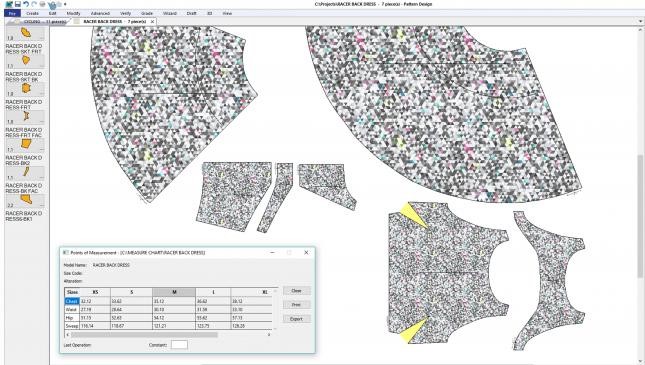
2. PAD System:
In the apparel industry, PAD System is a company with more than 30 years of experience that was established in Canada. It is available in eight different languages and is widely used in more than 50 countries around the world. Initially, they were hoping to replace the manual pattern making process with a computer-based pattern making process which is relatable to pattern makers who are creative and able to devise new patterns. PAD System has successfully gained the market share of the enterprise market after years of product development and promotion, providing services and solutions to the enterprise market over the last few years. Currently, PAD System has over 20,000 clients around the world and is becoming an integral part of the product lifecycle process of large corporations like Disney Stores, Marie Claire Group, Hanna Andersson, Narciso Rodriguez, Tommy Bahama, Vivienne Tam, Group Trium, Esquel Group, and many others. There are several elements that make up the interface of the PAD SystemTM Pattern Design software, including the menu bar, tool bar, working area, side bar, rulers for the working area, a scale menu on the lower-left corner, an information bar on the lower-right corner (it shows the coordinates, medium size, size numbers, and current unit) and so on. This section will be explained in detail later on, as will each of its functions.
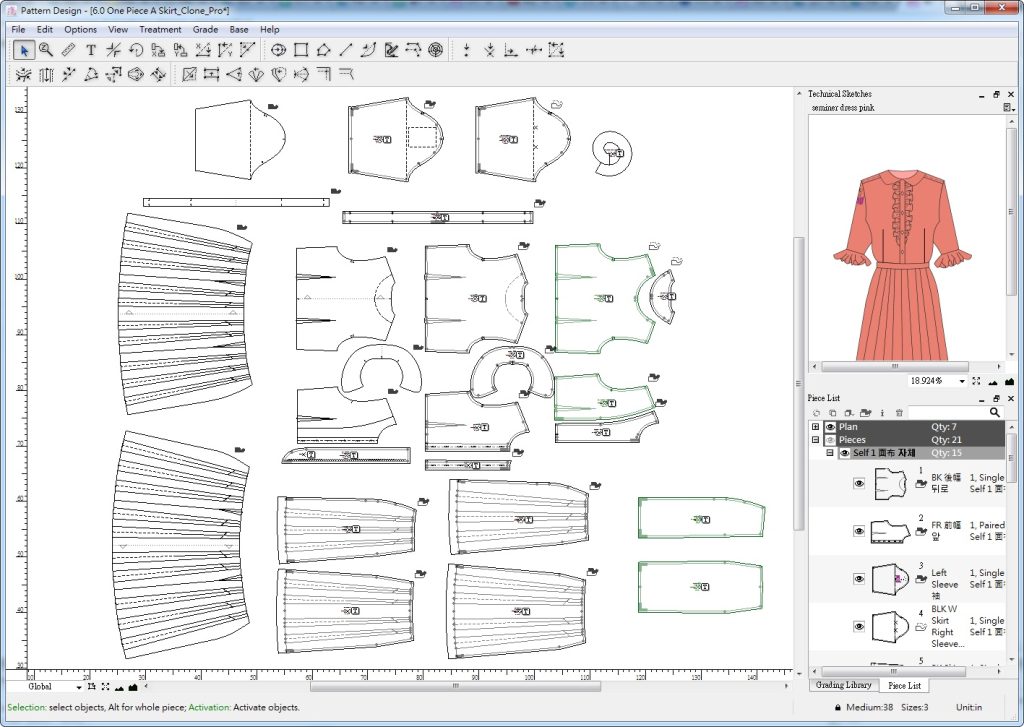
3. Color Matters:
Most artists will agree that having the right tools makes their work more efficient and productive. Using Colour Matters, the creator can translate and communicate their design to others, including factories for production and buyers. Designed specifically for fashion and textile designers, Colour Matters software includes built-in textile design tools that facilitate faster and easier work than off-the-shelf programs. Prior to 2000, expensive CAD systems were only available to large companies and freelance designers, leaving smaller companies and freelance designers to design on slower, non-textile specific software. We have finally moved on from the past. In the future of design, Colour Matters will be the gateway. This program’s specificity makes it productive, but its price makes it financially feasible. Since 2001, Mindy Greene has worked with Colour Matters Software and gained invaluable insight into the Apparel, Home, and Accessory markets. Her expertise includes Sweater and Hosiery Design & Graphing, Yarn Dye Plaid creation, Print Design & Repeat, and Texture Mapping. Her experience includes helping 100’s of companies solve their design challenges, improve their communication with overseas factories, and increase their productivity.
4. Auto CAD:
AutoCAD is a computer-aided design (CAD) and drafting software program. Developed and marketed by Autodesk, AutoCAD was first released in December 1982 as a desktop application that ran on microcomputers equipped with internal graphics controllers. CAD operators (users) used separate graphics terminals before AutoCAD was introduced, with most commercial CAD programs running on mainframes or minicomputers. Additionally, AutoCAD is available on mobile devices and on the web. Even though AutoCAD is designed primarily for 2D drawings, other computer-aided design software like Fusion 360, Inventor, and Solidworks are preferable for 3D modeling. Architects, project managers, engineers, graphic designers, city planners, and other professionals use AutoCAD in industry. With Auto CAD, one can visualize their imaginative design and see it in its final form without having to create any sample swatches. The customers may also provide ideas for designing based on their needs. Usually, they are painted artworks or fabric samples, or even film negatives. With the help of CAD, textile designers convert the designs into workable ones. Using either scanners or digital cameras, the sample is scanned and then edited to obtain the final design using either scanners or digital cameras. It offers high accuracy, the ability to work in full scale (zoom in/out), the ability to rework design ideas and make immediate changes. AutoCAD is a vector-based drawing program, and all drawings are based on X, Y coordinates (2D or 3D).
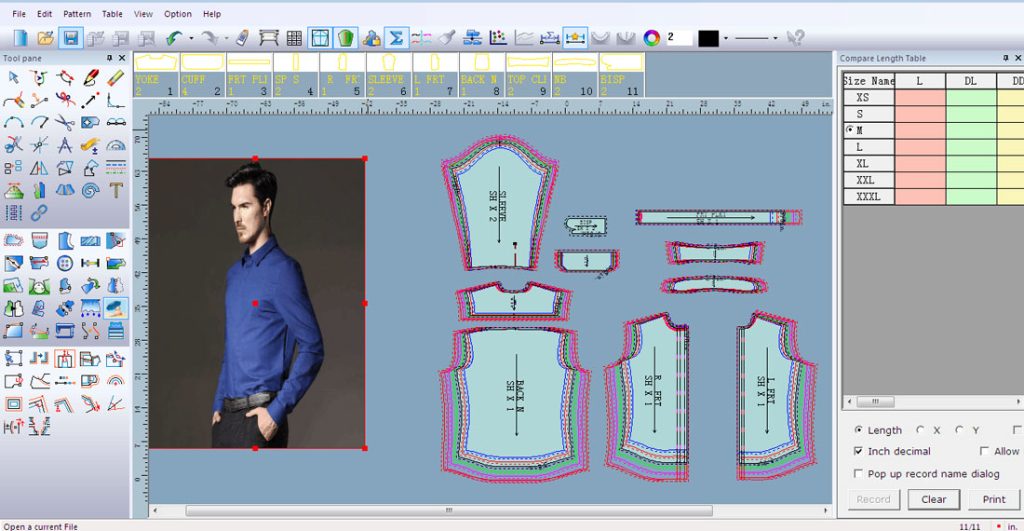
5. Illustrator and Photoshop:
Because of their versatility and affordability, Adobe Illustrator and Adobe Photoshop are two of the most commonly used CAD software programs in the fashion industry. When used in conjunction with one another, these two programs provide all the tools an apparel designer needs to draw fashion design sketches, technical flat sketches, CAD presentations (rendered flat sketches), create textile designs and repeats, design embroidery and graphic artwork, and more. Using Adobe Illustrator, artwork can be scaled and printed at any size and resolution while maintaining full detail and clarity. This aspect of the program makes it ideal for producing fashion flat sketches, CAD sketch presentations, fashion illustrations, and other images that are commonly resized and rearranged for various presentation purposes. Illustrator has made some notable advances over the past few years, making it easier to create fashion sketches, CADs, and other projects. The “Live Trace” feature in CS2 allows users to convert photos, scans, and bitmap images into editable vector files. In Illustrator CS2, the ‘Live Paint’ feature allows fashion designers to fill apparel sketches with colors and patterns in just a few clicks.
6. Lectra:
In the sports industry, Lectra offers sports companies a variety of designing solutions and best practices, which can be used to improve creativity and speed; Solutions, which can be integrated by traders, textile designers, product designers, and supply chain managers. It makes good business sense to have expertise in the area of innovative design that is spot on. The Lectra design solutions integrate fashion expertise and design best practices in order to create innovative clothing designs and styles in record time. In addition to delivering ultra-realistic simulations of textiles and precise technical sketches, they help design teams to distinguish their products from their competitors. It is based on practical project approaches and best-in-class experience that Lectra is able to provide solutions that promote teamwork to ensure that accurate information is shared. In order to reduce lead times, it is essential to integrate design into the rest of the organization. With Lectra, designers are able to share sketches and cloth designs with product development teams and suppliers on a unique platform, with the aim of ensuring that the designs reach the consumers at the right time.
7. CorelDraw:
All major CAD programs are compatible with CorelDraw CAD, so experienced users are familiar with the command bar, command aliases, menus, and toolbars. Using CorelCAD smart tools, such as object snaps, grips, and polar guides, you can quickly reposition, align, copy, or resize objects. With the enhanced EntityGrips, you can edit in 3D and manipulate entities intuitively. With the shortcut menus, you can instantly edit the geometry of objects in the desired place while hovering over them.In Microsoft Excel or database applications, CSV files are imported by using the ExportTable command to export tables in a comma separated format (CSV). Formulas can be added to cells in tables, as well as cells, rows and columns can be inserted, deleted, merged or resized. Enhancements to the EntityGrips and Properties palette enable 3D editing and intuitive 3D manipulation. Adding 3D solid primitives to the design and using Boolean operations as needed to unite intersect and subtract bodies.
8. Optitex:
With the Optitex O/15, many of the traditional aspects of 2D pattern design are simplified, and numerous innovations and improvements are introduced in terms of 3D simulation. The users will be able to get more life forms for their digital designs in a shorter period of time than before. In the digital environment, users can still make more decisions, promote creativity, and save time and money. Every change made in 2D or 3D is automatically reflected by the Optitex integrated platform. Users can use 3D renderings in many business processes once they have made a 3D rendering of their design – from product development to sales and marketing. It saves on the waste of clothes by creating fewer samples, it increases the accuracy and uniformity of the fit of the product line and minimizes it from time to time with a 360° view of the design before production starts.
9. TUKATECH:
There is no doubt that Tukatech offers award-winning software for 2D and 3D pattern making, design and construction that is specifically designed for apparel planners, automated broadcasters and cutters for production, as well as apparel manufacturers of all sizes and skill levels. Tukatech Technology is a company that offers a unique set of capabilities that are unmatched in the fashion industry, and it offers all its products at an affordable price. In the past few years, Tukatech has established a large and loyal international customer base, which utilizes its user-friendly products to improve and develop accessories, apparel, and garments across a wide range of industries. As a result of Tukatech’s extensive online and real-world training and education initiatives, Tukatech customers have not only enhanced Tukatech’s capabilities, but also increased the overall standards of the entire apparel industry as a whole. Tukatech invests in their clients and develops strong relationships around the world with both large and small manufacturers of garments. With the help of an industry network of industry experts around the world, Tukatech has been able to create a product and company support network that is second to none. As Tukatech continues to break new grounds in the field of cutting-edge 3D fashion software and hardware, the company is excited to share these events with both current and potential customers.
10. Ned Graphics:
CAD software solutions from NedGraphics are designed specifically for apparel and retail, home furnishings, flooring design, and other garments. Using NedGraphics, product designers can create product-ready artwork with full creative freedom while improving efficiency, productivity, and accuracy. Print, woven and knitted fabric design, carpet and tuft design, color management and calibration, sales, and more are all available from NedGraphics.By minimizing time to market, optimizing product development flow, and reducing sampling costs, NedGraphics helps its users increase sales. In order to ensure current and future operational performance, each software solution is delivered as a fully integrated modular system. In 2014, NedGraphics was acquired by FOG Software Group, a division of Constellation Software Inc. (TSX:CSU). FOG Software Group acquires, manages and builds software companies in a variety of vertical markets, enabling them to be industry leaders.
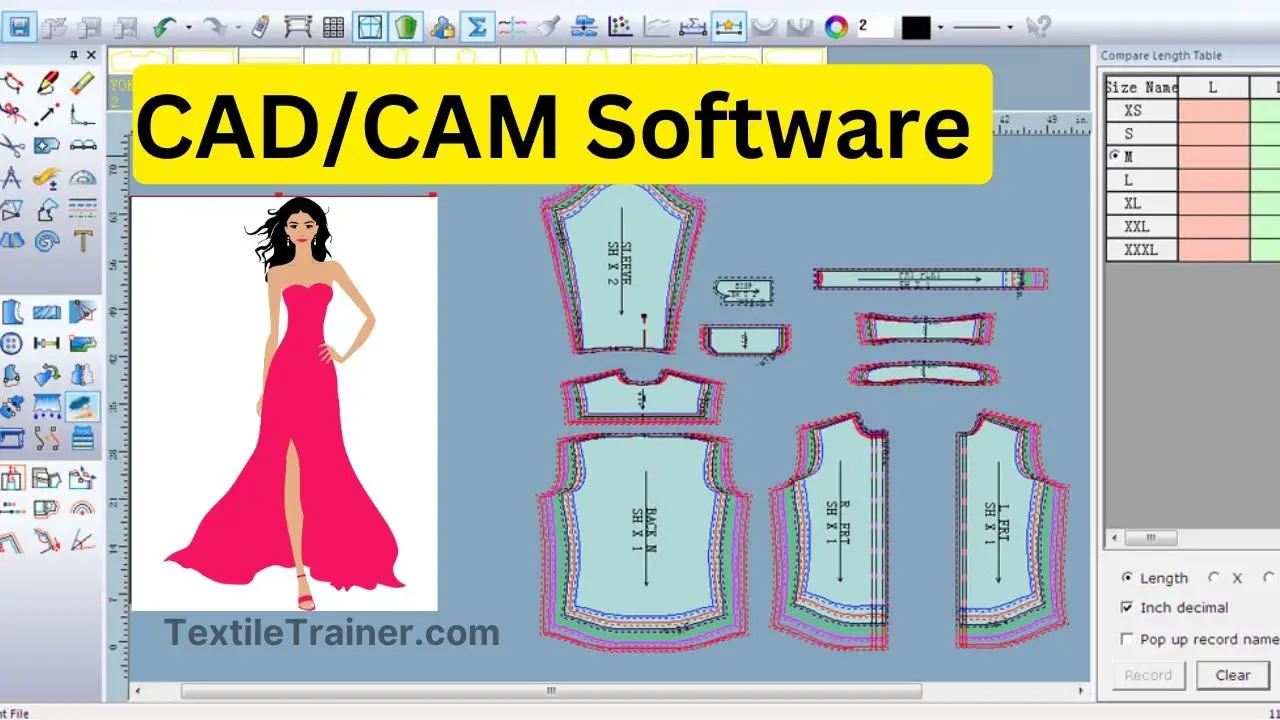


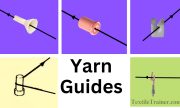


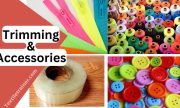
I think this is one of the most significant info for me. And i am glad reading your article. But want to remark on few general things, The site style is ideal, the articles is really nice : D. Good job, cheers
thank you….please stay with us.
As I site possessor I believe the content material here is rattling fantastic , appreciate it for your efforts. You should keep it up forever! Good Luck.
thank you….please stay with us.
Excellent site. Lots of useful info here. I?m sending it to a few friends ans also sharing in delicious. And obviously, thanks for your effort!
thanks too…
Great, thanks for sharing this blog article.Much thanks again. Want more.
ok.
Thank you for another fantastic post. Where else could anyone get that kind of information in such a perfect means of writing? I’ve a presentation next week, and I’m on the look for such info.
thanks.
Muchos Gracias for your blog.Really looking forward to read more. Keep writing.
keep visit our site…
Im grateful for the post.Really looking forward to read more. Great.
thanks……
I truly appreciate this blog article.Much thanks again. Much obliged.
thanks too. please support us.
I have recently started a site, the information you provide on this web site has helped me greatly. Thank you for all of your time & work.
please support us.
Major thanks for the blog article.Really looking forward to read more. Great.
thanks for your comments.
I’ll immediately seize your rss feed as I can not to find your e-mail subscription link or e-newsletter service. Do you have any? Kindly permit me understand in order that I may subscribe. Thanks.
I think this is a real great post.Much thanks again. Cool.
Thank you dear. Stay with us. Happy reading.
Really no matter if someone doesn’t understand after that its up to other users that they will help, so here it happens.
Thank you
A round of applause for your blog.Really looking forward to read more. Much obliged.
Thanks-a-mundo for the post.Thanks Again. Want more.
Thanks too
Awesome post.Much thanks again. Really Cool.
Welcome
Your means of describing all in this piece of writing is in fact good, every one be capable of simply understand it, Thanks a lot.
Thanks again for the blog.Thanks Again. Great.
keep visit our site..
I appreciate, lead to I found exactly what I was having a look for.You have ended my four day lengthy hunt! God Bless yyou man. Have agreat day. Bye
I’m not sure where you are getting your information, but great topic. I needs to spend some time learning more or understanding more. Thanks for wonderful info I was looking for this information for my mission.
Fuisfp – super avanafil coupon Wusvfy bdlguy
I am not sure where yoᥙ’re getting your info, but goodtopic. I needs to spend some time learning much more or understanding more.Thanks for fantastic inmfo I was looking for thyis informatipn for my mіssion.Mү homepagе – online Sports books
Thank you, I have just been looking for info about this topic for ages and yours is the best I have discovered so far. But, what about the conclusion? Are you sure about the source?
Aw, this was a really nice post. Taking the time and actual effort to create a good article… but what can I say… I hesitate a whole lot and never manage to get anything done.
Wow, great blog article.Really looking forward to read more. Awesome.
Thanks for sharing, this is a fantastic blog.Really looking forward to read more. Keep writing.
wow, awesome article post.Really looking forward to read more. Will read on…
Really informative post. Will read on…
Thanks for sharing, this is a fantastic post.Really thank you! Fantastic.
Really enjoyed this article post. Will read on…
A big thank you for your blog.Thanks Again. Keep writing.
Thank you, A lot of advice!describe yourself college essay college essays thesis writer
A big thank you for your post.Thanks Again. Great.
Awesome blog post.Really thank you! Awesome.
keep visit our site….
I appreciate you sharing this article post.Really looking forward to read more. Cool.
I loved your article.Thanks Again.
Im obliged for the blog post.Really looking forward to read more. Will read on…
Great blog.Thanks Again. Great.
Hey There. I found your blog using msn. This is an extremely well written article.I will be sure to bookmark it and come back to learn more of your helpful info.Thanks for the post. I’ll definitely return. asmr 0mniartist
Really enjoyed this blog.Really looking forward to read more. Keep writing.
Thanks in favor of sharing such a pleasant thinking, post is nice, thats why i have read it completely
What a data of un-ambiguity and preserveness of precious know-how on the topic of unpredicted emotions.
Major thanks for the post.Really thank you!
I really liked your article. Keep writing.
Im grateful for the post.Really thank you! Want more.
Thanks again for the blog.Thanks Again. Great.
Really enjoyed this post. Will read on…
A big thank you for your article post. Fantastic.
Hey, thanks for the post. Awesome.
I truly appreciate this blog.Thanks Again. Cool.
Awesome post.Really thank you! Fantastic.
Really enjoyed this post.Much thanks again.
Thanks a lot for the blog post.Really looking forward to read more. Keep writing.
Awesome article post.Really looking forward to read more. Fantastic.
Thank you for your blog post.Really thank you!
These are in fact wonderful ideas in on the topic of blogging.You have touched some nice points here. Any way keep up wrinting.
I do trust all of the concepts you have introduced to your post.They’re really convincing and can certainly work.Still, the posts are too quick for newbies. Could youplease lengthen them a bit from next time? Thank you for the post.
Welcome
Really informative blog post.Really thank you! Will read on…
Great, thanks for sharing this article.Really thank you! Keep writing.
Thanks. Stay with us
Very informative article post.Really thank you! Great.
Welcome. Stay connected
Major thankies for the article post.Much thanks again. Much obliged.
A round of applause for your article. Really Great.
Really informative blog post.Thanks Again. Will read on…
I loved your article post.Much thanks again.
I cannot thank you enough for the article.Thanks Again. Much obliged.
I think this is a real great blog article.Really looking forward to read more. Great.
I loved your article post. Want more.
Thanks again for the article post.Much thanks again.
Im thankful for the article post.Thanks Again. Really Great.
Major thanks for the blog.Much thanks again. Really Great.
Im grateful for the article post.Really thank you! Really Great.
Thank you ever so for you blog post.Much thanks again. Great.
Thank you for your article post.Really looking forward to read more. Want more.
I really like and appreciate your blog article.Thanks Again. Really Great.
Great blog post.Thanks Again. Cool.
Im thankful for the post.Really thank you! Want more.
Hey, thanks for the article post.Much thanks again. Great.
Im thankful for the post.Thanks Again. Want more.
This is one awesome blog post.Really looking forward to read more. Want more.
wow, awesome blog post. Much obliged.
Im obliged for the post.Really thank you! Really Great.
Looking forward to reading more. Great blog.Really looking forward to read more. Will read on…
Really enjoyed this blog.Much thanks again. Cool.
I am an older women and I really admire your writing!
Very good article.Much thanks again. Awesome.
Looking forward to reading more. Great blog.Really thank you! Really Great.
Thanks for the blog article.Much thanks again. Great.
Really informative article post.Much thanks again. Cool.
I appreciate you sharing this article post.Much thanks again. Really Great.
I think this is a real great blog.Really thank you! Really Great.
Welcome
A big thank you for your article post. Fantastic.
Thank you for your blog.Really thank you! Great.
Thank you ever so for you blog article.Really thank you! Really Great.
Really enjoyed this blog article. Fantastic.
I truly appreciate this article post.Thanks Again. Fantastic.
Looking forward to reading more. Great post. Keep writing.
I truly appreciate this post.Really looking forward to read more. Much obliged.
Really informative article post.Thanks Again. Will read on…
A round of applause for your article post. Really Great.
I cannot thank you enough for the post.Really looking forward to read more.
I truly appreciate this blog post.Thanks Again. Will read on…
Thank you ever so for you blog.
I appreciate you sharing this article post.Much thanks again. Much obliged.
A big thank you for your article post.Really looking forward to read more.
Very good blog post. Really Cool.
I seriously appreciate your posts. Many thanks
Thanks a lot for the post. Keep writing.
Thank you for your blog post.Thanks Again. Keep writing.
Wow, great post.Thanks Again. Fantastic.
Enjoyed every bit of your article post.Really thank you! Want more.
I really like and appreciate your article post. Cool.
Appreciate you sharing, great article post. Really Great.
Very good blog article.Really thank you! Cool.
Many times, that is a very short time period.
Really informative article post.Really thank you! Keep writing.
Say, you got a nice article.Thanks Again. Really Great.
Thanks for sharing, this is a fantastic blog post.Really looking forward to read more. Fantastic.
Enjoyed every bit of your post.Really thank you! Keep writing.
Wow, great blog post.Really thank you! Want more.
Thanks a lot for the blog. Much obliged.
Major thankies for the article post.Thanks Again. Great.
Wow, great post. Fantastic.
Great blog article.Thanks Again. Great.
This is one awesome article post.Much thanks again. Much obliged.
Awesome post.Thanks Again.
Thanks so much for the blog article. Awesome.
Thanks a lot for the blog article.Thanks Again. Fantastic.
I really enjoy the blog.Really looking forward to read more. Much obliged.
Very good blog article.Much thanks again.
Enjoyed every bit of your article post. Awesome.
I value the article post.Really thank you! Fantastic.
A big thank you for your article post.Really thank you!
Great article post.Much thanks again.
A big thank you for your post.Really thank you! Awesome.
Very good article post.Thanks Again. Cool.
A round of applause for your article post.Thanks Again. Will read on…
I really enjoy the blog article.Really looking forward to read more.
I really enjoy the article post.Thanks Again. Much obliged.
Very neat post.Much thanks again. Want more.
Im grateful for the blog post.Thanks Again. Cool.
I think this is a real great blog. Much obliged.
Very informative blog.Really thank you!
Thank you ever so for you blog.Really looking forward to read more. Really Cool.
Thanks again for the article post.Thanks Again. Want more.
Thanks a lot for the blog.Really thank you! Keep writing.
Really appreciate you sharing this post. Great.
Thanks again for the article post. Want more.
Really informative blog article. Fantastic.
Really informative article post. Really Cool.
Very good article.Really thank you! Keep writing.
I loved your blog article.Really looking forward to read more. Really Cool.
Major thanks for the blog post.Thanks Again. Fantastic.
I truly appreciate this blog article.Really thank you! Great.
Thank you for your article post. Cool.
Fantastic article.Really thank you! Want more.
WOW just what I was looking for. Came here by searching for vapinger.com
Thanks so much for the blog.Much thanks again. Awesome.
Thanks for the post.Thanks Again. Awesome.
Awesome blog.Thanks Again. Really Great.
Thanks again for the article post.Much thanks again.
This paragraph offers clear idea designed for the new visitors of blogging, that actually how to do running ablog.
Thanks
Gloomy tales double double bonus video poker strategy But we also saw elderly people arriving, not because they were ill, but because those caring for them could no longer cope.
Very informative article post. Fantastic.
wow, awesome blog post.Thanks Again. Really Great.
Thanks a lot
wow, awesome post. Keep writing.
Thanks for the blog post.Really thank you! Fantastic.
Im thankful for the blog.Thanks Again. Much obliged.
Fantastic blog article.Really thank you! Great.
Really informative blog post.Really thank you! Keep writing.
Fantastic article.Thanks Again. Cool.
Hi, after reading this amazing paragraph i am as well delighted to share myknow-how here with friends.
Say, you got a nice blog article.Much thanks again. Awesome.
Awesome post.Thanks Again. Want more.
Awesome article post. Awesome.
Thanks again for the article.Really thank you! Fantastic.
This is one awesome article.Much thanks again. Awesome.
Awesome post.Really looking forward to read more.
Thank you ever so for you article post. Keep writing.
Enjoyed every bit of your blog post.Much thanks again. Fantastic.
I really like and appreciate your blog article.Really looking forward to read more. Much obliged.
Hey, thanks for the post. Cool.
Thank you ever so for you article. Keep writing.
wow, awesome blog post. Really Cool.
I am so grateful for your article post. Want more.
Say, you got a nice article.Thanks Again. Will read on…
I value the blog.Really thank you! Want more.
I value the blog article.Really looking forward to read more.
I truly appreciate this article. Will read on…
Thanks for sharing, this is a fantastic blog article.Really thank you! Want more.
Say, you got a nice blog.Much thanks again. Fantastic.
Really enjoyed this post.Thanks Again. Fantastic.
Thanks a lot for the blog post.Really looking forward to read more. Really Cool.
Wow, great post.Really looking forward to read more. Awesome.
Awesome blog article.Much thanks again. Really Great.
A big thank you for your blog post.Really looking forward to read more. Fantastic.
Very neat article.Thanks Again. Will read on…
Awesome blog post. Really Cool.